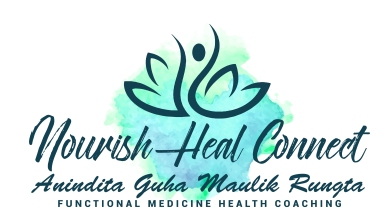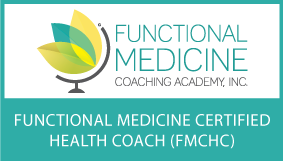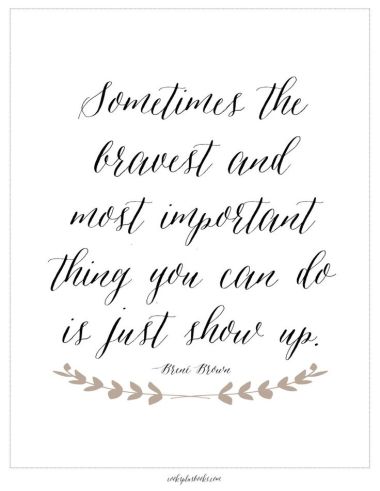Eczema has been known to be affected by diet in many cases especially in the case of children. Eczema can be triggered or made worse by many things like house dust mites, excessive humidity or dryness, pollen, stress or by eating certain foods amongst others. In the case of many children with severe eczema, food maybe one of the causes but in the case of a few children it maybe their only trigger.
When Aiyana’s eczema became worse in June 2012, we did her blood allergy test which looks for specific allergen-related antibodies (IgE or immunoglobulins which is one of the 5 sub classes of antibodies) in order to identify her allergy triggers. I was really hoping that by finding out her food triggers we would be able to control her eczema which was worsening and slowly spiralling out of control. But I also knew that food is very rarely the only trigger and hence changes in diet alone cannot by itself help control eczema without the support of a good skin care and moisturizing routine.
Her results came back positive for most of the 29 allergens we had tested her for showing high IgE levels for tree nuts (like hazelnuts, walnuts), house dust, sesame seeds. Her total IgE levels were higher than normal and surprisingly the test showed positive results for wheat, oats, lemon as well. As her pediatrician put it so well when she explained the results to us- “ Aiyana’s skin is like an angry person, such a person will react to most triggers at this point in time”. By the time we had got these results, we had seen her skin condition deteriorate continuously since October 2011 in spite of trying out the entire range of moisturizing and topical corticosteroids arsenal as and when required but to no avail. I decided to control her diet for the next year or so in the hope that it would help improve her eczema since it has seemed to help some other children. Since surprisingly for us she had a high positive outcome for wheat in the test, I really hoped that it might have been a key trigger for her eczema becoming worse over the past year or so.
In any case I was determined to leave no stone unturned in trying to control and improve her eczema. Hence I made certain changes in her diet, the most difficult part of which was making it “gluten-free”. I have decided to share my learnings that I gained by doing a lot of research on this unique diet, its availability in our country and ways in which I made sure Aiyana was able to follow this at home and more importantly outside as well.

LUCKILY for us, we did a much more accurate skin scratch test for her in May this year and gluten was ruled out as an allergen and slowly we were able to introduce wheat and other forms of gluten without any issues.
Gluten free??
In a country like India where allergies and diet restrictions are not very common and awareness is very low, the challenges of following a “gluten free” diet increases manifold. And when I had to explain dietary restrictions to a 6 year old child (and to others around us) and ensure that she follows it, I had to make a lot of changes to the way we thought about food. Gluten is the protein complex found in wheat, barley and rye whereas oats is inherently gluten free but invariably suffers from cross contamination with other such grains. It gives elasticity to the dough, helping it keep its shape and And it is found in, well almost everything and I mean EVERYTHING!! I never knew it was all invasive till I had to list down foods that did not have gluten.
All the breads, pastas, noodles, Maggi, cakes, desserts, all the kinds of Indian breads like naans, rotis, wafers, biscuits and a host of other child friendly and convenient foods were a complete NO NO. The positive things about this was that a) it automatically made me look for healthier alternatives and more home cooked foods without high levels preservatives, sugar, fats and salt b) my daughter did not have coeliac disease which is an autoimmune disorder affecting the small intestine which has reduced inability to absorb nutrients from the food and only a COMPLETELY Gluten free diet helps. In fact, I had not even heard of this condition till I started to find out more about gluten free diet. Even now I have heard of just once child having this condition which is still comparatively rare in India. For a person having Coeliac disease, even a very small exposure can lead to seizures, osteoporasis and growth issues in children. In my daughter’s case I did not have to worry so much about cross contamination in the kitchen or the dust from wheat, maida (refined wheat flour) affecting her health since it did not affect her to that extent.
We never truly realise what we have till we have till we have to live without it
However, food was to become a huge challenge for us. I changed our flour options from wheat to others like jowar (sorghum), bajra (pearl millet), ragi (finger millet) but not completely successfully. For a child who is accustomed to the taste of wheat, it is a HUGE change.And it is definitely easier said than done. I started making pancakes, chapatis (a type of Indian bread) out of jowar, unsuccessfully tried to give her other food options made of ragi and bajra. She just didn’t like the taste. Luckily, a diet followed predominantly in southern India is made of rice and includes dosas, idlis and uttapams (a kind of crepe, a steamed preparation and a kind of pancake with toppings respectively) and which my children love. Also since one major staple food is rice for us (especially true for Bengalis like for me from the eastern part of India), I started giving a lot of snacks made out of rice for her school lunches and the like.
Variety is the spice of life
True to my nature, I did some more research and found out gluten free recipes through some amazing blogs and websites like www.glutenfreeconfessions.com and glutenfreegoddess.blogspot.in (the first one is my favourite one). They helped me get started on a journey which was different from any other. I learned to appreciate how difficult it is for people who are on restricted diets. I also made sure that for most parts, my whole family followed the same diet as my daughter. I also figured out ready mix gluten free products which were available in India and how to get them if they were not. This opened up a lot more options for us which were also tastier and convenient as a whole. I got bread, pancakes and other flour mixes from Orgran, Pamela’s products and Bob’s Red Mill, Schar from various places. Orgran as a brand was the only one readily available in Mumbai at that time. ( There are of course many more such brands available world wide to cater to a vast segment but I have not used any of those other brands.) But thankfully things have changed for the better in the last year and a lot more products are now available in India both offline and online. I am listing some of the products and their availability in our country-
- Orgran Gluten free products – Foodhall at Phoenix Mills, Godrej Natures Basket in Mumbai
- Bob’s Red Mill Natural Foods– Foodhall at Phoenix Mills
- Bob’s Red Mill, Schar and Orgran products are also available on websites like http://www.healthyworld.in/, http://www.gourmetco.in/ and http://www.foodesto.com/ which deliver all over India
- Pamela’s Products are not available in India, I had to arrange for them from US


I have used all of the above mentioned products apart Bob’s Red Mill. My favourite was the bread mix from Pamela’s Product which turned out quite close to a regular bread and almost as tasty. For someone like me who has never had to bake bread in her life, the end result was pretty decent as compared to when I was trying to make the same from scratch. However, I did manage to bake bread, cake and the likes from scratch using gluten free ingredients with mixed results. I would like to also list the ingredients that are available incase you are willing to try your hand at this as well-
- Zero G – An Indian brand which has products like potato starch, corn starch ( not corn flour), GF atta and maida mix for rotis etc and other basic GF grains like sorghum etc. It is available in large grocery stores and online in the websites mentioned earlier

- Conscious Foods– another brand which has all kids of organic GF grains and flours like bajra, ragi, jowar etc
- Bob’s Red Mill– Guar gum and Xanthan gum powder, both of which are essential to emulate the binding property of gluten in regular foods
A child’s dilemma
However, the most difficult part was to ask a 7-year-old to stop having what she had been used to eating so far and it was worse when she had to attend birthday parties and other social events. I had to prepare her mentally and then send some homemade cakes and even other foods so that she could eat something at the birthday parties. In most cases, I spoke to the hostess and asked them to have a couple of options for Aiyana if possible (and even had to refrain from sending her to a few of them). Also in India, since these kinds of allergies are uncommon, there are hardly any options in terms of restaurant foods, bakeries and at social events (apart from the South Indian variety). It was a difficult time, but she knew that she was not supposed to eat a wide range of food and she did refrain from eating them. I started baking a lot more at home and even managed to make, cupcakes, muffins etc for her with the help of some of baking mixes which I sourced. Luckily for a mother like me, there are a lot of like-minded people in the world who have shared their gluten free recipes and other ideas which really helped us to adjust to this challenging diet.

And finally, a kite rises highest against the wind, not with it
And so it is with my daughter. While I would certainly not wish for her or anyone else to go through these challenges which seem to cross her path ever so often, most of the times we do not have a choice but to face them head on. While my daughter has been put back on a regular diet from June this year, the 11 months or so when she had to follow this diet was a difficult time for her since it added to the challenges she faced already due to her severe eczema.
But I can already see the strength in her which helps her to lead as normal a life as possible and her will power which has increased by leaps and bounds in the past year or so.
I know now the she has the strength to not only rise against the wind but to soar to dizzying heights …















